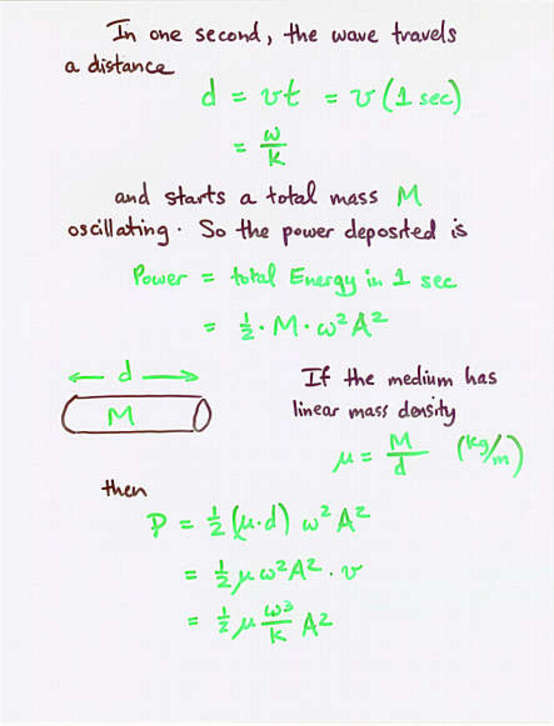 Viewgraph 14
Viewgraph 14
 Viewgraph 15
Viewgraph 15
y(x, t) = A sin(k*x - omega*t)
v = wavelength/period = wavelength*frequency
k = 2*pi/wavelength
Power = 0.5 * mu * omega^2 * A^2 * velocity
 Viewgraph 14
Viewgraph 14
 Viewgraph 15
Viewgraph 15
Note that the energy deposited by this wave depends on several of its properties, and in different ways.

Joe sings into a long cardboard tube of radius r = 0.2 m.
He hits a perfect middle C (256 Hz), causing the air
molecules to shake back-and-forth. At the far end of the
tube, the sound wave carries a power of 0.01 Watt = 0.01 Joule/sec .
How large is the amplitude of motion of the air molecules
in the tube?